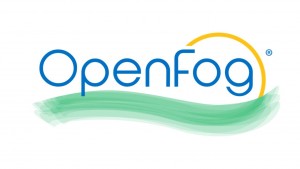Over the past several months, I have been privileged to represent Cisco in working with other industry and academic partners to form the OpenFog Consortium, which was announced earlier today. You can learn more in the press release about what this new organization is, but I want to focus on why such an organization is so important at this stage of development of the Internet of Things (IoT).
I have been privileged to represent Cisco in working with other industry and academic partners to form the OpenFog Consortium, which was announced earlier today. You can learn more in the press release about what this new organization is, but I want to focus on why such an organization is so important at this stage of development of the Internet of Things (IoT).
Earlier this week, my colleague Maciej Kranz discussed the city of Barcelona’s fog computing proof of concept, which was showcased at the Smart City World Expo Congress. The proof of concept demonstrated that fog technology can bring intelligence to a range of urban services, including transportation, parking, lighting, traffic and waste management, public safety, and law enforcement.
But smart city services are only the beginning. Fog computing can provide immense value across all industries. For example, it might take 12 days via satellite to transmit one day’s worth of data to the cloud from a remote oil rig. With fog computing the data is processed locally, and safety or equipment alerts can be acted upon immediately. In manufacturing and transportation, preventive maintenance applications can process a huge amount of sensor data to trigger needed maintenance before there is an equipment failure. In retail, data from parking lot video cameras can not only provide security surveillance, but can also work with fog analytics capabilities to predict store traffic flow and optimize checkout staffing.
Obviously, these different industry scenarios require quite different skill sets to implement. We need advanced silicon expertise to provide a wide range of computing power, from high-end to low power. We need software and applications for infrastructure and system management. Cloud technology must work seamlessly with fog computing to provide a seamless end-to-end customer experience. Security has become the critical must-have factor for implementing IoT, and industry and academia must work together to fend off hackers and ensure bulletproof system security. More than ever, fog computing requires a highly scalable and collaborative approach, with deep expertise in a wide range of industries and technologies. No single company can do it alone.
It is in this environment that Cisco has joined with other key members from industry and academia to form the OpenFog Consortium. The other founding members are ARM, Dell, Intel, Microsoft, and Princeton University. Our goal is to accelerate the deployment of fog technologies by developing an open architecture and core technologies that can be leveraged across industries in many different IoT scenarios. Together, we hope to:
- Raise awareness of how a seamless architecture from fog to the cloud can benefit customers in a wide range of industries
- Foster collaboration and partnerships among vendors, and actively co-innovate with academia
- Remove barriers to IoT adoption by ensuring frictionless interoperability and composability of fog technologies and applications from various vendors
Today’s announcement represents just the beginning of our efforts to accelerate IoT deployments and value by bringing distributed compute, network, and storage capabilities to IoT endpoints at the edge of the network. We hope that in coming months, more industry and academic partners will join us to promote and accelerate the adoption of open fog computing.


CONNECT WITH US